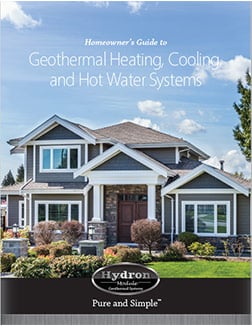Does the blast and bang of your old gas furnace cycling on remind you that you’re one day closer to replacing it? Does the energy efficiency and cost savings of a ground source heat pump (GSHP) look better every day?
If you answer “yes,” you’re in good company. About 50,000 GSHPs are installed in the U.S. each year. Many building experts will tell you that the tighter you make your home’s “thermal envelope” before GSHP installation, the more likely you’ll enjoy top energy and cost savings throughout its life.
Sealing gaps and adding insulation now ensures the greatest efficiency for the GSHP you’ll install later.
A Tight Home Reduces Strain on Your GSHP
GSHPs last longer than conventional HVAC systems and typically double the 10 to 15-year lifespan of air source heat pumps. If a GSHP is in your future, you can set the stage now for its maximum efficiency by sealing leaks. Tightening your envelope ensures:
- More consistent indoor temperatures. Your system will cycle on and off less frequently, which means less wear and tear on its components.
- Top efficiency. Your system will deliver fully as it was designed to deliver from day one.
It’s still important to introduce outside air to maintain and improve indoor air quality. You can control that exchange with an energy recovery ventilation system like the one available as an accessory with Enertech GSHPs.
Invest In an Energy Audit
A home energy audit is an excellent place to start. The audit reveals gaps in your home’s current energy efficiency and informs your decisions about what areas to address first. It can also help you secure grants, rebates, loans, and tax credits that make energy upgrades more affordable.
Energy Savings For Beginners: Getting Started With a Home Energy Audit
Ten Efficiency Tricks to Improve GSHP Performance
Here are ten ways you can tighten your home’s thermal envelope and set the stage for super efficiency and cost savings upon installation of your GSHP system.
- Weatherstrip and caulk to seal gaps around doors, windows, and points where pipes and wires enter the home.
- Shore up the insulation in your attic and crawl space.
- Seal leaks in ductwork and insulate ducts in unconditioned spaces.
- Seal electrical outlets and switches with foam gaskets or foam sealant.
- Insulate pipes and wrap your water heater in an insulated blanket.
- Seal your fireplace and chimney. Ensure the chimney damper closes tightly.
- Install door sweeps on exterior doors; ensure thresholds are properly sealed.
- Install energy-efficient windows and doors.
- Seal your garage door with weatherstripping and add a garage door threshold seal.
- Install energy-efficient blinds, shades, or curtains on your windows.
Keep Your Eye on the Prize – Top Efficiency with GSHP
For inspiration, check out this story about the Sevem family’s GSHP retrofit. Their GSHP system helped them lower their HVAC and domestic hot water costs upon installation. They pay approximately $1,500 a year (about $125 monthly).

